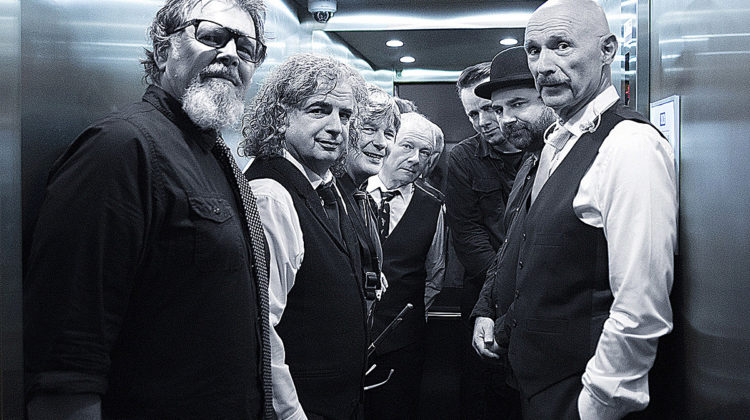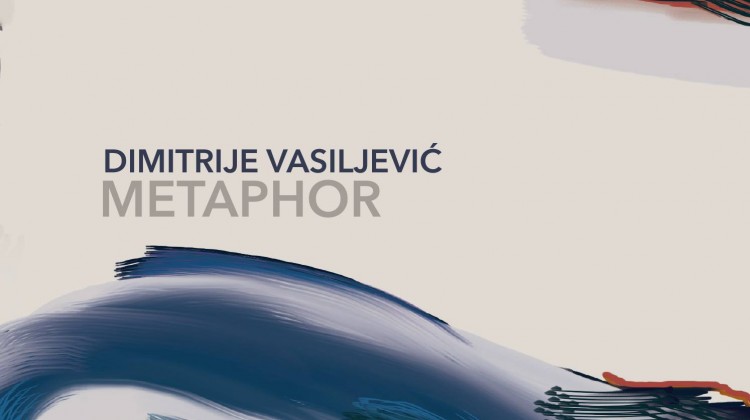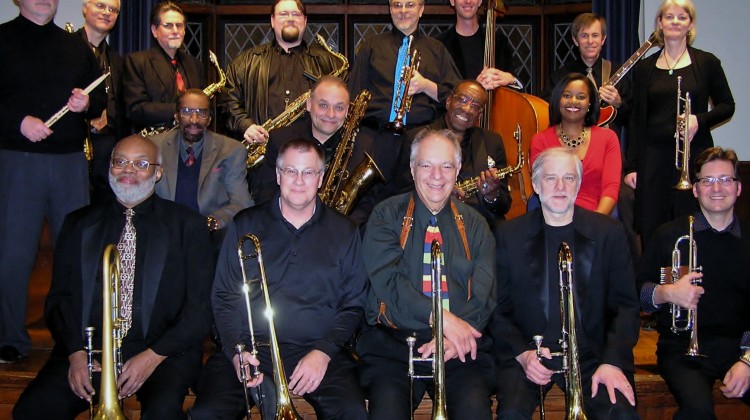Anyone who thinks jazz is fading or dying needs to go see Jim Clayton. Not just listen to him; they need to go experience a show.
Last Wednesday, during one of my frequent visits to Toronto, a friend invited me to a show at a local distillery. She lives nearby and often checks out their musical offerings, and had seen Clayton once before. Knowing I’m a jazz fan, she bought an extra ticket and insisted I’d enjoy it. She wasn’t wrong.
We arrived nearly an hour before the 8 PM showtime, figuring we could chat awhile before the performer rolled in shortly before starting. I’ve been attending jazz shows for decades, and know a lot of jazz musicians; it’s a blanket statement but they tend to focus more on the music (the improvising in particular) and not so much on the audience, or on presentation.
So I was pleasantly surprised that once we’d been seated and had our order taken, the first person to visit our table was the performer. (This would be the first in a series of jazz firsts for me that evening.) Clayton was introducing himself to each group of guests, and asking for requests (another first), if they had any favourite songs or artists or even styles. My interest was piqued, so I mentioned enjoying Billy Joel, and he lit up; turns out he was a huge fan as a kid. Clearly, the jazz police weren’t in attendance that night.
As he visited other tables, we visited the website and Instagram listed on his card, and learned that in addition to five thousand followers on Instagram, Clayton has nearly 30,000 followers on Facebook. Turns out, during Covid lockdowns, he performed nightly online, and word of the shows quickly spread. His website includes feature stories from national news outlets, and info about his “secret smooth jazz past” where his early-2000’s group won several national awards.
Clayton took the stage right at 8 PM, and launched into Lerner and Lowe’s “Almost Like Being In Love”—not an unusual jazz selection, as it’s a Nat “King” Cole classic, but he introduced it as being from “the only Broadway show I know of that’s about Scotsmen,” and as he often does, opened the familiar song with the little-heard verse from the Broadway show.
A minute into the song, his jazz credentials become obvious. Not being a serious musician myself, I’m not sure how anyone can simultaneously play and sing. But Clayton’s ability to accompany himself is on another level. For some songs it’s a one-man big-band sound, and for others it’s a syncopated, grooving left hand bass with a right hand that’s playing a counterpoint or harmony to his vocals. And when he’s not singing, his solos are melodic and interesting, even at blistering tempos. He could clearly hold an audience’s attention with just his piano playing, but luckily for them, he sings too.
He’s not a crooner in the Sinatra tradition; his style is closer to Bob Dorough, best known for writing the memorable and educational School House Rock tunes. Clayton’s most recent album opens with Dorough’s own “Devil May Care,” followed by the aforementioned “Almost Like Being In Love.”
Jersey Jazz Magazine reviewed that album (titled Look Out) and pointed out his remarkable vocal similarity to Bobby Troup (the singer/pianist who wrote Route 66, as well as starring on TV’s “Emergency!”) It’s a warm, friendly vocal sound, and a great pairing with his distinct piano style.
Within a couple of songs, Clayton was sharing stories with the room, and inviting requests. His website mentions his background as a radio announcer, which explain the ease with which he engages his audience. He’s charming and funny, and clearly adores his family; his wife and daughter were sitting right up front, and were enjoying it as much as the rest of us.
The evening was a fascinating mix of the Great American Songbook and pop favourites that Clayton reworked into new jazz classics. One table requested Dave Brubeck; Clayton happily delivered, and instead of a traditional improvised jazz solo (and despite the odd time signature) he inserted Stevie Wonder’s “I Wish” into the middle.
For two solid hours (with no break) Clayton took us on a terrific ride that veered through New Orleans jazz, Jim Croce, Gershwin, TV themes, Henry Mancini… I don’t recall every song, and a few weren’t complete songs. When someone called out “Root Beer Rag”, Clayton explained that it was an Billy Joel tune from before Joel was famous, and then proceeded to easily perform a bit of the complex tune, before somehow segueing to “Everybody Wants To Be A Cat” from Disney’s The Aristocats, which he joked was “the prequel to The Lion King.”
But even the pop music had jazz woven through it. As Clayton pointed out, early jazz musicians started out by playing the pop music of the day, which was show tunes, and became the classic Great American Songbook. He proposed a New American Songbook, where jazz players explored the songwriters of the 1970s and 1980s, before launching into a fascinating, swinging minor-key version of Paul Simon’s “You Can Call Me Al” followed by a superb, fast-swinging version of Rodgers and Hart’s “This Can’t Be Love,” rich with Clayton’s signature bebop piano sound. It’s a reminder that jazz isn’t about the repertoire; rather, it’s how you approach the songs.
The evening whipped by for everyone including Clayton, who was surprised when told we were approaching the two-hour mark. He began wrapping up by segueing between two “rainbow” songs: a mellow version of Rainbow In The Dark (a 1980s heavy metal song that I had to google but which delighted many) and The Rainbow Connection, from the Muppet Movie. The latter frequently closed his online shows, and closes his new album; the audience burst into applause when they recognized it.
Clayton is a wealth of information about the songs he performs, and has stories for every occasion. He’d have held our attention simply by sharing anecdotes and trivia, but mixed with his captivating piano style (he calls it “a blend of bebop and New Orleans”) and his warm vocals, his shows aren’t just a concert or a recital; they’re an experience. His online viewers dubbed his shows Jim’s Piano Bar, and if jazz clubs had been invented by Generation X, this is what it’d look and sound like.
Speaking with him after the show, it was clear that Clayton enjoyed the show as much as we did. He loves what he does, and we loved listening and watching. There’s a quote on his website from Susan Hayes of Global News: “After spending time with Jim, hearing him sing, play piano, and speak about his passion for people and music, it was obvious to me why he’s an award-winning artist.” After seeing him perform, I agree one hundred percent.
-Steve Broom, March 2024











